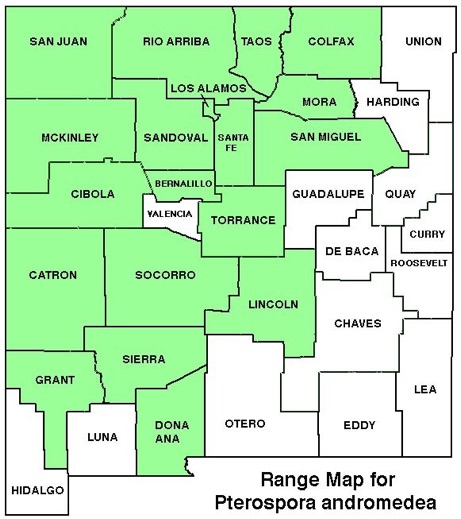WILDFLOWERS OF NEW MEXICO

Though without leaves and showy flowers, this unusual plant with 12–20–inch tall flower stems still demands attention. A dense spike of small, bell-shaped flowers tops the unbranched, reddish to brown stem. With no chlorophyll for photosynthesis, the plant links with microrrhizal soil fungi to parasitize pine tree roots for nutrients. The stem turns brown and persists through the winter.
FLOWERS: June–August. Flower stems emerge directly from the ground with a spike-like cluster of nodding, flowers on short stalks (peduncles); flowers are reddish to creamy-yellow, 1/4–3/8-inch long (6–9 mm), and bell-shaped similar to a blueberry.
LEAVES: None (scale-like).
HABITAT: Sandy, gravel loamy soils; ponderosa pine forests.
ELEVATION: 7,000–9,700 feet.
RANGE: Rocky Mountain states and westward; Alaska to Mexico.
SIMILAR SPECIES: A smaller parasitic plant, Pinesap, Hypopitys monotropa, in similar habitats, has red stems, nodding when young, with flowers about 5/8-inch long (17 mm), mostly along one side on stem.
NM COUNTIES: Widespread in ponderosa pine habitats throughout NM mountains: Bernalillo, Catron, Cibola, Colfax, Dona Ana, Grant, Lincoln, Los Alamos, McKinley, Mora, Rio Arriba, San Juan, San Miguel, Sandoval, Santa Fe, Sierra, Socorro, Taos, Torrance.









WOODLAND PINEDROPS
PTEROSPORA ANDROMEDEA
Heath Family, Ericaceae (formerly in Indian Pipe Family, Monotropaceae)
Perennial herb









THE CONTENTS OF THIS WEBSITE ARE COPYRIGHTED AND CANNOT BE USED
WITHOUT PERMISSION OF GEORGE OXFORD MILLER





























































EMAIL ME







